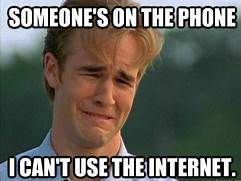Seven trends in indexing between 2000 and 2022
- Geraldine Begley

- Apr 14, 2022
- 3 min read
If you are interested in trends in indexing since 2000, when I first started my freelance business, read on to learn more about changes in technology, development of social media, internet, indexing software and more!
1. Hard-copy and PDF
2000

I used to get sent a package, containing the indexing brief and the hard copy of the book, delivered by post or a courier. The couriers rarely delivered packages to my home, and I usually had to drive into town to collect the package from a shop. I returned the completed index via email, and I had loads of scrap paper for recycling.
2022

I download the PDF proof from Drop Box, We Transfer or the client’s website and I return the index via email. My office has much less scrap paper now and I am converting slowly to a paper-less office! Every house in Ireland now has its own unique Eircode (post code) which makes it easier for couriers to find households. However, I rarely get the hard copy of books delivered now.
2. Social media
2000

I had an email address and access to dial-up internet. There was no social media. There were email discussion groups for indexers, proofreaders and copyeditors.
2022

There are loads of social media platforms including Facebook, LinkedIn, Twitter. The email discussion groups have moved onto forums where discussions take place about diverse topics relating to editorial business matters. There are also specialist groups on Facebook and LinkedIn.
3. Internet and Wi-Fi
2000

Internet was accessed via dial up with that distinctive connecting sound! You couldn’t make a phone call and be on the internet at the same time. I only used the internet for browsing or for access to my emails.
2022

I have access to high-speed broadband/Wi-Fi. I use the internet to access the forums mentioned above, for checking names/facts or I use Amazon ‘look inside’ feature to look at back-of-the-book indexes. I need access to Wi Fi to download the PDF of the proofs. Sometimes the Wi Fi can be unstable, which is particularly challenging if I want to join a meeting on Zoom and I keep getting disconnected.
4. Kitchen table to home office
2000

I started working in the kitchen to be close to the phone socket and then moved to a spare bedroom to use as an office.
2022

I have an outside garden office. This is a mixed blessing as it can have extremes of heat – very cold in the winter and can get too hot in the summer. The advantage of being outside of the home is that I can lock all the work away and not look at it or be tempted to work in the evening unless I have a tight deadline!
5. Index cards to software
2000

When I was completing the training course, I used Word for the sample indexes. I input headings I wrote on scrap paper cut into index cards. Traditionally, indexers used index cards to write out the headings and sort the headings before indexing software programs were widespread. When I started indexing, I used Macrex indexing software.
2022

I only use Word to print out the index and to convert the index into a Word document to send to clients. I now use Sky Indexing software which I found more intuitive and easier to use than Macrex.
6. One to two monitors
2000

I had a one monitor and a big pile of hard copy pages to read through and highlight and input into my indexing software.
2022

I have two monitors. The PDF is on the left-hand monitor oriented in a portrait-style and the indexing software is ‘main’ screen on the right-hand-side. I usually copy and paste the text into the software to reduce spelling errors and inconsistencies. On my wish list is one large screen which would be big enough for both the PDF and the software.
7. Budgets and outsourcing
2000

I used to get indexing work queries by telephone or email by commissioning editors who worked for publishers in Ireland or the UK. All the book production was completed in-house and I was generally happy with the budget even though I was slow and getting used to the indexing process.
2022

Over the past ten years or so the production of books has been outsourced to packagers in the UK and overseas. This has coincided with reduced budgets allocated for indexing which are below the Society of Indexers’ recommended rates and are not fair recompense for the time and effort required to produce a good index.
I can see how technology has progressed since 2000 and how my approach to indexing has changed. Indexing is traditionally an isolated occupation but with development of social media and Zoom I can communicate and join webinars or conferences with other freelancers across the globe without leaving my home.
For anyone writing a book which needs a proofread or an index, hire a professional from AFEPI (Association of Freelance Editors, Proofreaders & Indexers of Ireland) , the Society of Indexers, or CIEP (Charter Institute of Editing and Proofreading) to lighten your load!



